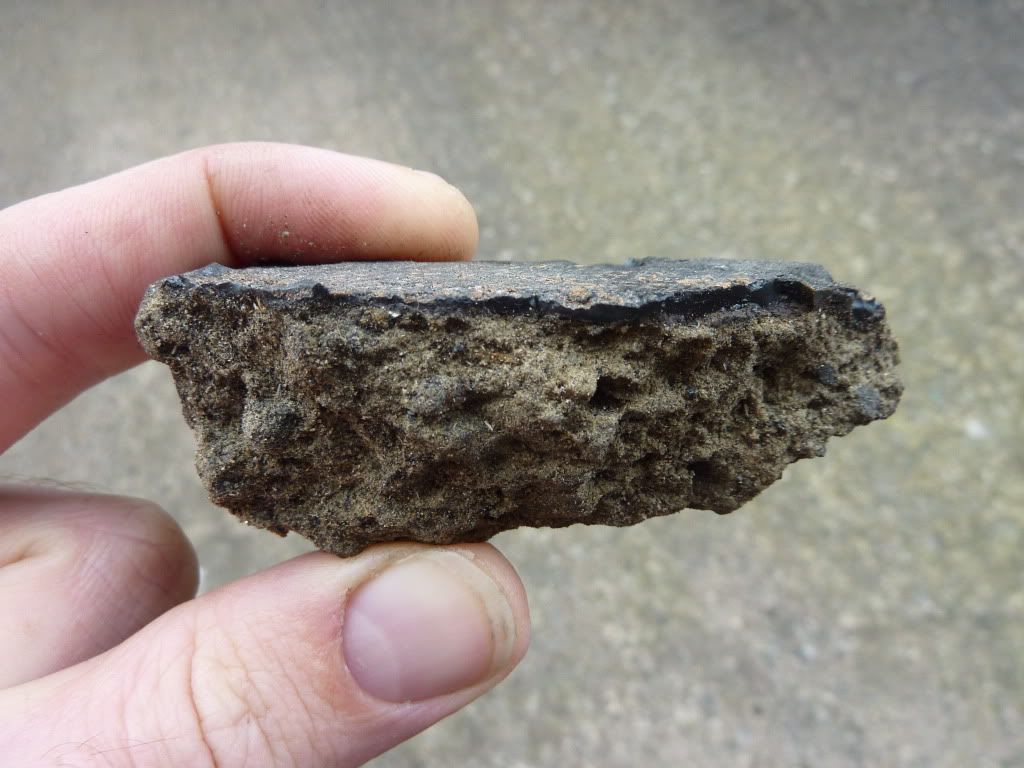Hi,
I've recently moved into a new house, a 1930's semi, and have been investigating the source of some damp creeping across the floorboards from the exterior wall under the stairs.
Having lifted a few floorboards it would appear the floor is ashphalt with a very thin layer of bitumen which also originally ran up the wall slightly. The floorboards had been laid on top of this when still wet (though they were also nailed down). Having searched through previous posts I cannot find reference to a similar floor composition.
I assume the damp was simply bridging from the exterior wall below the DPC to the floorboards via debris in the gap between the two due to the breakdown of this bitumen layer, and not throught the floor itself.
Can anyone assist in identifying the composition of the floor from the attached images? Is the surface bitumen and does this form the DPM for the floor?
Chunks of the floor have broken away as I removed the floorboards. What would be the recommended method for filling and repairing this small area of floor? Is there a single product I could use to fill and recover the exposed areas, and lick up onto the exterior wall, before replacing the floorboards? Or would I need to level off the surface somehow and then apply a sealing layer of some desciption?
Any help or recommendations would be greatly appreciated.


I've recently moved into a new house, a 1930's semi, and have been investigating the source of some damp creeping across the floorboards from the exterior wall under the stairs.
Having lifted a few floorboards it would appear the floor is ashphalt with a very thin layer of bitumen which also originally ran up the wall slightly. The floorboards had been laid on top of this when still wet (though they were also nailed down). Having searched through previous posts I cannot find reference to a similar floor composition.
I assume the damp was simply bridging from the exterior wall below the DPC to the floorboards via debris in the gap between the two due to the breakdown of this bitumen layer, and not throught the floor itself.
Can anyone assist in identifying the composition of the floor from the attached images? Is the surface bitumen and does this form the DPM for the floor?
Chunks of the floor have broken away as I removed the floorboards. What would be the recommended method for filling and repairing this small area of floor? Is there a single product I could use to fill and recover the exposed areas, and lick up onto the exterior wall, before replacing the floorboards? Or would I need to level off the surface somehow and then apply a sealing layer of some desciption?
Any help or recommendations would be greatly appreciated.



